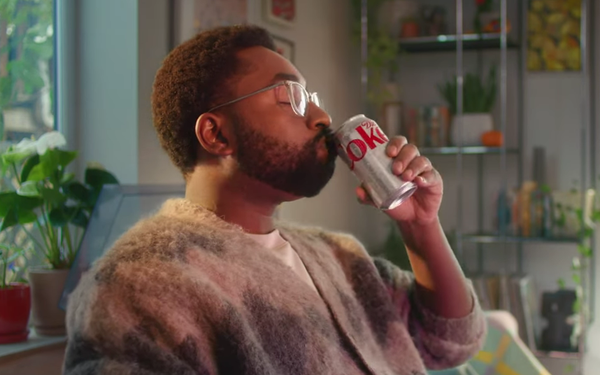
Coca-Cola saw growth from both of its sugar-free brands
last quarter, leading to a Q3 performance that exceeded analyst expectations.
According to the company, sales for diet and zero-sugar brands grew, and accounted for about 14%-16% of soft drink
volume for Coca-Cola.
“We called out Diet Coke because I think there was a period of time, a decade long, maybe longer, maybe two decades, where Diet Coke, particularly in the
English-speaking countries, was declining,” Coca-Cola CEO James Quincey said during an earnings call with investors. “It has more recently stabilized over the last few years, and is
actually growing this year,” he said.
“The strategy has always been to do justice to each brand on its own, but we have found recently more responsiveness to investments in
marketing and innovation for Diet Coke in particular, and that has gone alongside sustained growth in Coca-Cola Zero Sugar,” he added.
advertisement
advertisement
Coca-Cola COO Henrique Braun said that Diet
Coke’s strong volume growth stemmed from “reaching a new generation of consumers with campaigns like ‘Know the Signs,’ which invites drinkers to take a Diet Coke break.”
The brand launched that campaign back in March.
During the call, Coca-Cola also alluded to the possibility of further investing in the sugar-free category, with analysts predicting the company
will follow through with expanding its healthier options.
“We expect health-focused innovation to remain a priority, with Coke doubling down on zero-sugar recipes and functional benefits
including protein and fiber,” Dan Su, chartered financial analyst for Morningstar, wrote in an analysis of the company today. “After the success of Coke Zero Sugar (global volume up 14%),
it is poised to speed up the launch of other better-for-you offerings.”
Coca-Cola has also invested in zero-sugar iterations of new beverages. When Sprite introduced its Sprite+Tea
flavor ahead of the summer, it launched in both regular and zero-sugar
versions.
Quincey stressed the company’s recent marketing continuing to evolve to be more “centered on connecting deeply with consumers through digital engagement,
personalized experiences, and cultural relevance.” He cited its Fanta brand’s recent partnership with Universal Pictures and Blumhouse on a Halloween campaign that ran across around 50
markets and featured “iconic horror characters on our packaging, limited-time flavors, and immersive retail and digital experiences.”
Quincey also discussed how Coca-Cola has
struggled to break into the coffee category at the scale it hoped with the acquisition of Costa Coffee in early 2019. He noted that the company’s “investment hypothesis” for Costa
“didn’t work out as we expected, in the sense that we were looking for much more growth in the non-retail-store side of the business, which much more suits the Coke system.”
He added, “We are kind of standing back and reflecting on what that means for us and where we should go next in coffee.”
That could mean Coca-Cola dropping the Costa brand,
according to Morningstar.
“Management reaffirmed its long-term commitment to the coffee category but acknowledged that the Costa acquisition has not helped unlock growth beyond coffee
shops. Given its capital allocation discipline, we think Coke is likely contemplating a divestiture,” Su wrote.